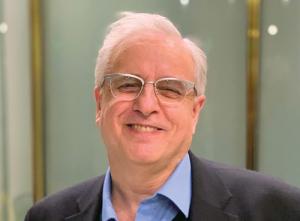What’s Changed About Changing?
Steve Mitnick is President of Lines Up, Inc., Executive Editor of Public Utilities Fortnightly, and author of a new book, “Women Leading Utilities, the Pioneers and Path to Today and Tomorrow,” and before that of “Lewis Latimer, the First Hidden Figure” and “Lines Down: How We Pay, Use, Value Grid Electricity Amid the Storm.” Mitnick was formerly an expert witness in proceedings before the utility regulatory commissions of six states, the District of Columbia, the Federal Energy Regulatory Commission, and in Canada, and a faculty member at Georgetown University teaching undergraduate microeconomics, macroeconomics and statistics.
Look at what has happened in fourteen months. Just think back to the beginning of this bout with a contagion, to late March of twenty-twenty.

A fair number of the investor-owned utilities had committed to cutting their carbon dioxide emissions. And doing so quite considerably. Some of their major customers demanded it. As did some of their major investors. As did some of their state officials, reflecting public sentiment concerned about climate change with large majorities in the polling across the political spectrum.
Now think about where we are at this moment in time, fourteen months hence. In late May of twenty-twenty-one, as this issue of Public Utilities Fortnightly went to press, virtually every investor-owned utility has committed to cutting its carbon dioxide emissions. And not just quite considerably but so much so that the drive to net zero emissions has become the norm in our industry's plans.
What I just said is well worth repeating. The drive to net zero has become the norm in our industry's plans.
This development literally takes your breath away. Especially when you consider that just a couple of years ago, the consensus was that net zero was a real reach. Not only that. The consensus was that net zero couldn't possibly become a reality until we were well into the second half of this century.
Feel free please to point a finger at this writer too. Four decades and counting in utility regulation and policy didn't count for much in my prognostications. While I was confident the industry should, could, and would cut emissions severely, I never imagined that we'd plan for and commit to eighty, ninety, and then a hundred percent clean in the foreseeable future.
Something must have happened in these fourteen months to speed up the industry's run to low emissions into a sprint to no emissions. So what was it that changed about changing the carbon footprint of generating electricity in America?
Well, for one, we entered the fourteen months with one President of the United States and exited them with a different one, a man much more determined to drive the country to near net zero emissions rather soon, and then to it, not that much less soon. His prose from the bully pulpit and his plans and policies have seemingly stirred the cultural dynamics on climate change.
For another, we entered the fourteen months with rapidly improving economics for a range of non-emitting generation options (relative to emitting options), and exited them with remarkably compelling economics for non-emitting options. This trend has greatly simplified the decisionmaking behind closing older coal-fired generating plants in particular.
And for another, the drive to net zero in electricity generation has been accelerated by the drive to electrify our drive, literally, our cars, trucks and buses, by the vehicle manufacturers. For if our grid's carbon intensity continues to be eight to nine tenths of a pound of carbon dioxide per kilowatt-hour, it's hard to make the case for electrifying transportation. But if we cut our grid's carbon intensity to seven, then six, then five, then four tenths of a pound, etc., electrifying transportation is transformed to a slam-dunk case.
Like I said, the consensus of a couple of years ago was that net zero was a real reach and realistically far off in time. The consensus has clearly changed. Now many industry leaders are convinced that net zero is in reach, possibly as early as this century's midpoint, and perhaps a few years earlier than that.
I think we can all agree that it's been a long fourteen months dealing with Covid. Much has been lost. Much has been forgone.
Though this weird interregnum has had a few side benefits. You know, like time to catch your favorite program on Netflix. And time to toss a new plastic toy to your dog. And, also, time for net zero to transform from a slogan to an industry strategy.
P.S.: A special shout-out is appropriate. This annual issue of PUF
on the state and future of power is made possible by the support of Guidehouse.


